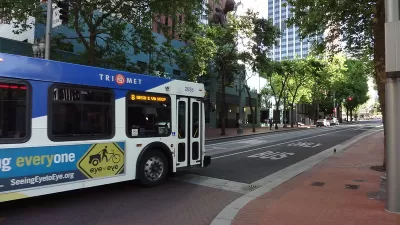Beware of transportation officials promising traffic reductions, according to this opinion piece.

In June, Bay Area voters in nine counties will consider Regional Measure 3 (RM3), which asks whether tolls should be raised by $3 on seven Bay Area bridges to generate funding for BART and other public transit and mobility projects in the region.
Irvine Dawid first reported on the potential ballot measure for Planetizen in December 2016, following up again with developments in October 2017 and January 2018 as RM3 picked up momentum toward the ballot. RM3 already has the support of the East Bay Times and organizations like the Bay Area Council, Silicon Valley Leadership Group, and SPUR.
David Schonbrunn, president of the transit advocacy organization TRANSDEF, argues that RM3 will fail to deliver its promised congestion reductions.
The sponsor of the measure, the Metropolitan Transportation Commission (MTC), decides on our region’s transportation priorities. Traffic conditions in the Bay Area have steadily worsened over the last few decades, despite the many billions of dollars spent by MTC. If MTC knew how to cut traffic, it would have done so by now. Slogans like “We must do something” ignore this. Doing the same things that haven’t worked before won’t help now.
According to Schonbrunn, the only thing that will reduce traffic is a reduction in solo driving, but the "MTC and the Valley Transportation Authority (VTA) have continuously spent our resources to facilitate solo driving rather than transit." Schonbrunn suggests sending a message to the MTC by voting now, and suggests Seattle as a model for planning in a way that inspires more commuters to leave their cars at home.
FULL STORY: Opinion: RM3 would condemn Bay Area to gridlock

Alabama: Trump Terminates Settlements for Black Communities Harmed By Raw Sewage
Trump deemed the landmark civil rights agreement “illegal DEI and environmental justice policy.”

Study: Maui’s Plan to Convert Vacation Rentals to Long-Term Housing Could Cause Nearly $1 Billion Economic Loss
The plan would reduce visitor accommodation by 25% resulting in 1,900 jobs lost.

Why Should We Subsidize Public Transportation?
Many public transit agencies face financial stress due to rising costs, declining fare revenue, and declining subsidies. Transit advocates must provide a strong business case for increasing public transit funding.

Paris Bike Boom Leads to Steep Drop in Air Pollution
The French city’s air quality has improved dramatically in the past 20 years, coinciding with a growth in cycling.

Why Housing Costs More to Build in California Than in Texas
Hard costs like labor and materials combined with ‘soft’ costs such as permitting make building in the San Francisco Bay Area almost three times as costly as in Texas cities.

San Diego County Sees a Rise in Urban Coyotes
San Diego County experiences a rise in urban coyotes, as sightings become prevalent throughout its urban neighbourhoods and surrounding areas.
Urban Design for Planners 1: Software Tools
This six-course series explores essential urban design concepts using open source software and equips planners with the tools they need to participate fully in the urban design process.
Planning for Universal Design
Learn the tools for implementing Universal Design in planning regulations.
Smith Gee Studio
Alamo Area Metropolitan Planning Organization
City of Santa Clarita
Institute for Housing and Urban Development Studies (IHS)
City of Grandview
Harvard GSD Executive Education
Toledo-Lucas County Plan Commissions
Salt Lake City
NYU Wagner Graduate School of Public Service





























